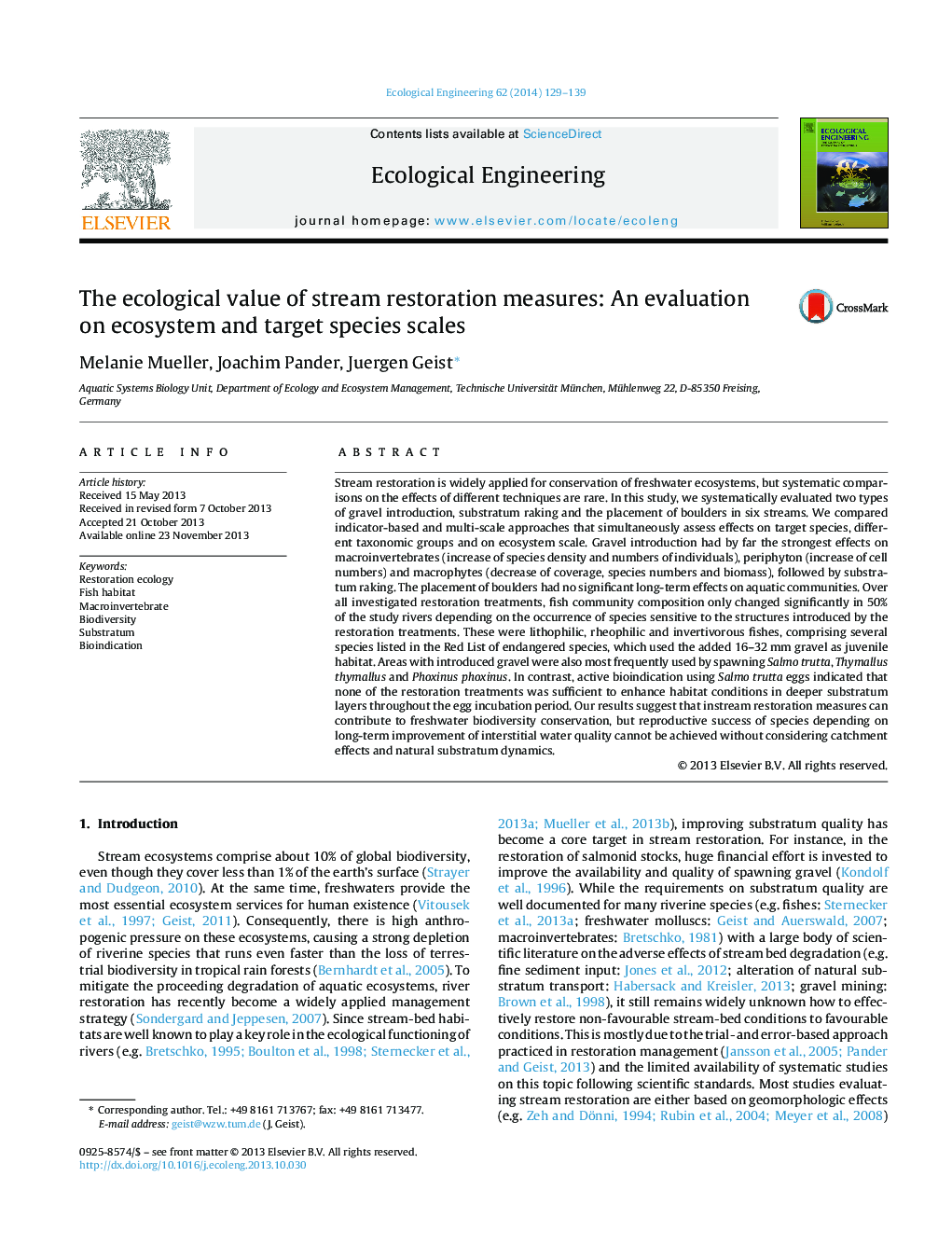| کد مقاله | کد نشریه | سال انتشار | مقاله انگلیسی | نسخه تمام متن |
|---|---|---|---|---|
| 6302254 | 1618037 | 2014 | 11 صفحه PDF | دانلود رایگان |
- Systematic comparisons on the effects of different stream restoration techniques are rare.
- Herein we compare the effects of four substratum restoration measures in six streams.
- We apply an integrative approach to assess the effects on multiple biological scales.
- The biological effects were surprisingly small and restricted in time.
- Restoration measures should be scientifically tested before being applied in practice.
Stream restoration is widely applied for conservation of freshwater ecosystems, but systematic comparisons on the effects of different techniques are rare. In this study, we systematically evaluated two types of gravel introduction, substratum raking and the placement of boulders in six streams. We compared indicator-based and multi-scale approaches that simultaneously assess effects on target species, different taxonomic groups and on ecosystem scale. Gravel introduction had by far the strongest effects on macroinvertebrates (increase of species density and numbers of individuals), periphyton (increase of cell numbers) and macrophytes (decrease of coverage, species numbers and biomass), followed by substratum raking. The placement of boulders had no significant long-term effects on aquatic communities. Over all investigated restoration treatments, fish community composition only changed significantly in 50% of the study rivers depending on the occurrence of species sensitive to the structures introduced by the restoration treatments. These were lithophilic, rheophilic and invertivorous fishes, comprising several species listed in the Red List of endangered species, which used the added 16-32Â mm gravel as juvenile habitat. Areas with introduced gravel were also most frequently used by spawning Salmo trutta, Thymallus thymallus and Phoxinus phoxinus. In contrast, active bioindication using Salmo trutta eggs indicated that none of the restoration treatments was sufficient to enhance habitat conditions in deeper substratum layers throughout the egg incubation period. Our results suggest that instream restoration measures can contribute to freshwater biodiversity conservation, but reproductive success of species depending on long-term improvement of interstitial water quality cannot be achieved without considering catchment effects and natural substratum dynamics.
Journal: Ecological Engineering - Volume 62, January 2014, Pages 129-139
